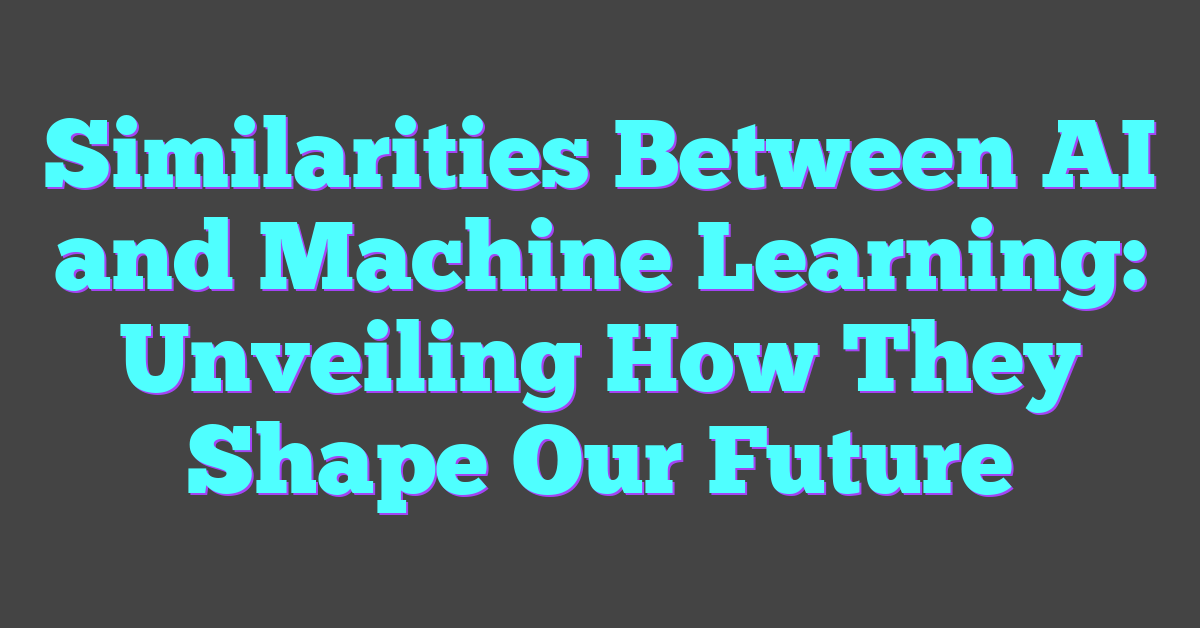Artificial intelligence (AI) has become an integral part of our daily lives, powering everything from virtual assistants to recommendation algorithms. But what happens when these seemingly infallible systems encounter unexpected challenges? Understanding how to “break” an AI isn’t just about finding flaws; it’s about learning the limitations and vulnerabilities of these advanced technologies.
In this article, we’ll explore the fascinating world of AI failures, diving into common methods that can disrupt or confuse these systems. Whether you’re a tech enthusiast, a developer, or just curious about the inner workings of AI, uncovering these weaknesses offers valuable insights into making AI more robust and reliable.
Understanding AI Systems
Understanding AI systems is essential for grasping their intricacies and potential points of failure. Delving into their fundamental components helps in comprehending how they operate and how they can be disrupted.

What Is AI and How Does It Work?
Artificial Intelligence (AI) mimics human intelligence to perform tasks. It uses algorithms and large datasets to learn patterns and make decisions. Machine learning, a subset of AI, involves training models on data to improve their performance over time. For instance, AI in image recognition processes thousands of images to identify objects.
Key Components of AI Systems
Transparent components enhance understanding AI vulnerabilities. Key components include:
- Algorithms: Mathematical instructions guiding the AI’s decision-making process. Examples include neural networks and decision trees.
- Datasets: Large volumes of data used for training and testing. Examples are text corpora, image libraries, and sensor data.
- Models: Trained algorithms capable of making predictions or identifying patterns. Models gain accuracy with diverse datasets.
- Hardware: Physical devices like GPUs and TPUs that accelerate computations. Powerful hardware ensures faster processing.
Understanding these components reveals insights into potential flaws and areas for improvement in AI systems.
Common Vulnerabilities in AI
AI systems, while powerful, contain weaknesses that can be exploited. Understanding these vulnerabilities is vital for both enhancing security and improving AI robustness.
Security Flaws and Exploits
AI systems frequently face security threats that target their underlying algorithms. Attackers can exploit these systems by reverse-engineering machine learning models to reveal sensitive information or by injecting malicious inputs designed to deceive the AI. For example, adversarial attacks introduce small, carefully-crafted perturbations to input data, causing the AI to misclassify images, which can have serious implications in systems like self-driving cars or facial recognition software. These security flaws underscore the need for rigorous testing and validation.
Data Poisoning and Model Manipulation
Data poisoning occurs when attackers intentionally corrupt the training data, causing the model to learn incorrect patterns. This manipulation can degrade the AI’s performance or steer it toward making biased or harmful decisions. For instance, in a spam detection system, corrupted data might make the model incorrectly categorize legitimate emails as spam. Model manipulation extends this by targeting pre-trained models through techniques such as transfer learning, where manipulated subtasks subtly influence the overall model behavior. Thus, ensuring data integrity and monitoring model updates are essential for maintaining AI reliability.
Ethical and Legal Considerations
Breaking an AI system involves various ethical and legal implications due to the intricate nature of artificial intelligence.
Legal Implications of Tampering with AI
Tampering with AI systems carries significant legal consequences. Many jurisdictions categorize this as a criminal offense, particularly when it leads to data breaches or unauthorized access to sensitive information (refer to cybersecurity laws in the US and EU). Individuals risk facing substantial penalties, including fines and imprisonment, if they tamper with AI systems. Tampering also violates intellectual property rights. AI models often incorporate proprietary algorithms and datasets, making unauthorized alterations illegal under intellectual property laws. Legal frameworks continue to evolve to address AI-related offenses more comprehensively.
Ethical Concerns in Breaking AI Systems
Ethical considerations are paramount when discussing the deliberate breaking of AI systems. Such actions can erode trust in technology. Users might lose confidence in AI applications if they believe these systems are easily compromised or manipulated. Additionally, breaking AI systems can exacerbate biases and inequalities. Altered AI models can produce biased or discriminatory outcomes, affecting marginalized groups disproportionately. Ethical frameworks and standards for AI development and deployment, such as those proposed by organizations like IEEE, emphasize the responsibility of developers and users in maintaining the integrity and fairness of AI systems.
Preventive Measures and Best Practices
Adopting preventive measures and best practices is essential to safeguard AI systems from potential attacks and maintain their integrity.
Strengthening AI Against Attacks
Securing AI systems involves multiple strategies. First, implementing robust input validation techniques ensures no malicious data can enter the system. This can prevent injection attacks.
Encrypting sensitive data, both at rest and in transit, adds another layer of security. Strong encryption methods protect data from unauthorized access.
Regularly updating and patching AI systems helps mitigate vulnerabilities. Keeping software up-to-date closes security gaps and reduces exploitable weaknesses.
Conducting adversarial training can make AI models more resilient. By exposing models to adversarial examples, developers can teach them to handle unexpected inputs.
Ongoing Monitoring and Updates
Constant monitoring is vital for maintaining AI security. AI systems require continuous surveillance to detect anomalies and potential threats.
Implementing real-time monitoring tools helps identify unusual patterns. These tools can alert administrators to suspicious activity, allowing for quick responses.
Regularly updating AI systems is also crucial. Periodic reviews and enhancements ensure AI capabilities remain up-to-date and secure.
AI systems should also be audited regularly. These audits help identify and rectify any security lapses, ensuring long-term reliability.
By integrating these best practices, organizations can build robust, resilient AI systems capable of withstanding various attacks and threats.
Conclusion
Understanding how to break an AI system sheds light on its vulnerabilities and the importance of safeguarding it against potential threats. By implementing robust input validation, encrypting sensitive data, and ensuring regular updates, developers can create more resilient AI systems. Adversarial training and ongoing monitoring play crucial roles in maintaining security and reliability. Adhering to ethical frameworks and conducting regular audits further strengthens AI systems, ensuring they remain trustworthy and effective. These best practices not only protect AI from attacks but also foster a safer digital environment for everyone.
Frequently Asked Questions
What are common vulnerabilities in AI systems?
AI systems often face vulnerabilities such as reverse-engineering, injection of malicious inputs, data poisoning, and model manipulation, which can mislead the system and lead to flawed outputs.
How can attackers mislead AI systems?
Attackers can mislead AI systems through data poisoning (introducing corrupt data), model manipulation, and other methods like injecting malicious inputs to distort decision-making processes.
Why is ethical consideration important in AI tampering?
Ethical considerations in AI tampering are vital to maintaining trust, preventing bias, and ensuring that AI systems are fair and just, avoiding significant legal consequences and societal harm.
What measures can enhance AI system security?
Enhancing AI system security involves robust input validation, encrypting sensitive data, regular updates, adversarial training for resilience, continuous monitoring, real-time surveillance, and conducting regular audits.
What is adversarial training in AI?
Adversarial training is a process where AI models are trained with adversarial inputs (intentionally designed to mislead) to improve their resilience against such attacks and ensure robust performance under various conditions.
How does data poisoning affect AI systems?
Data poisoning involves introducing corrupt or malicious data to the training set, leading to inaccurate or biased AI models that can make incorrect or harmful decisions.
Why is ongoing monitoring crucial for AI systems?
Ongoing monitoring is essential to detect and address any anomalies or attacks in real-time, ensuring the AI system remains reliable, secure, and performs as expected over time.
What is the role of regular audits in AI security?
Regular audits evaluate the AI system’s integrity, checking for vulnerabilities, compliance with ethical standards, and effective security measures, thus ensuring the system’s long-term reliability and security.
How does encryption help protect AI systems?
Encryption protects sensitive data within AI systems from unauthorized access or tampering, thus ensuring data integrity and confidentiality.
What are the legal consequences of tampering with AI?
Tampering with AI can lead to severe legal consequences, including fines, sanctions, and potential lawsuits, as it often involves breaching data privacy and security regulations.



